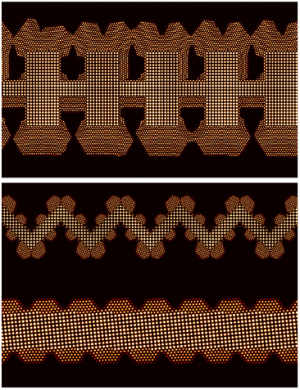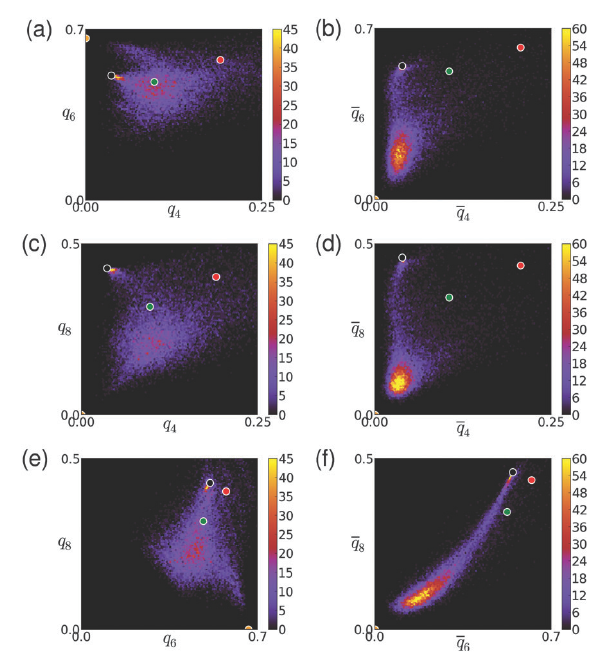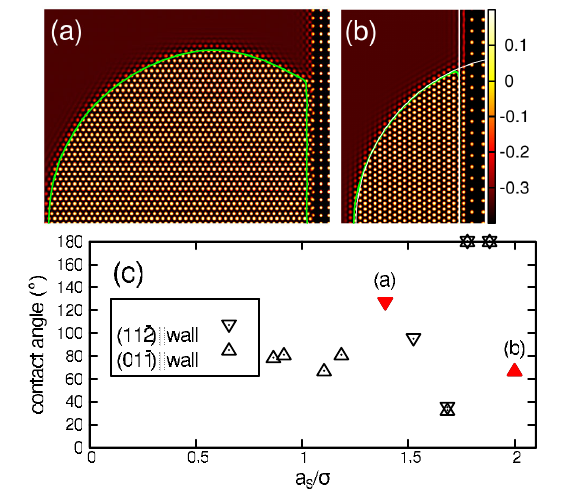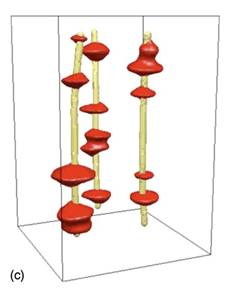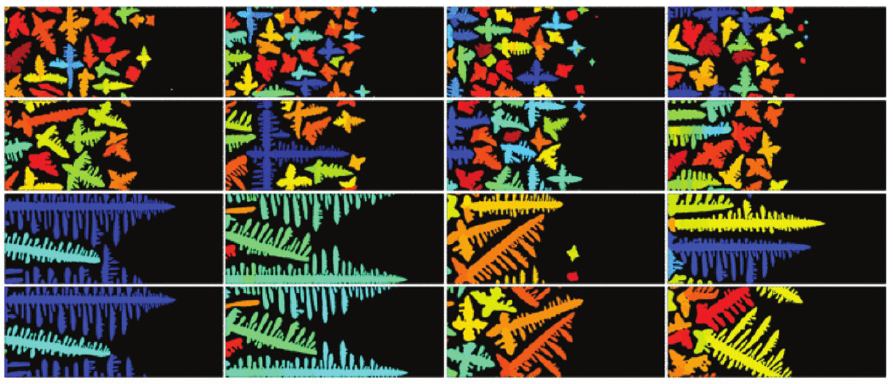
Frigyes Podmaniczky1, Gyula Tóth2, Tamás Pusztai1, László Gránásy1,3
1Institute for Solid State Physics and Optics, Wigner Research Centre for Physics, P.O. Box 49, Budapest H-1525, Hungary
2Department of Mathematical Sciences, Loughborough University, Loughborough, Leicestershire, LE11 3TU, U.K.
3BCAST, Brunel University, Uxbridge, Middlesex, UB8 3PH, United Kingdom
The first order phase transitions, like freezing of liquids, melting
of solids, phase separation in alloys, vapor condensation, etc., start with
nucleation, a process in which internal fluctuations of the parent phase
lead to formation of small seeds of the new phase. Owing to different size
dependence of (negative) volumetric and (positive) interfacial contributions
to work of formation of such seeds, there is a critical size, at which the work
of formation shows a maximum. Seeds that are smaller than the critical one
decay with a high probability, while the larger ones have a good chance
to grow further and reach a macroscopic size. Putting it in another way,
to form the bulk new phase, the system needs to pass a thermodynamic
barrier via thermal fluctuations. When the fluctuations of the parent phase
alone lead to transition, the process is called homogeneous nucleation.
Such a homogeneous process is, however, scarcely seen and requires
very specific conditions in nature or in the laboratory. Usually, the parent
phase resides in a container and/or it incorporates floating heterogeneities
(solid particles, droplets, etc.). The respective foreign surfaces lead to
ordering of the adjacent liquid layers, which in turn may assist the formation
of the seeds, a process termed heterogeneous nucleation. Herein, we
review how the phase-field techniques contributed to the understanding
of various aspects of crystal nucleation in undercooled melts, and its
role in microstructure evolution. We recall results achieved using both
conventional phase-field techniques that rely on spatially averaged
(coarse grained) order parameters in capturing the phase transition, as
well as molecular scale phase-field approaches that employ time averaged
fields, as happens in the classical density functional theories, including
the recently developed phase-field crystal models.
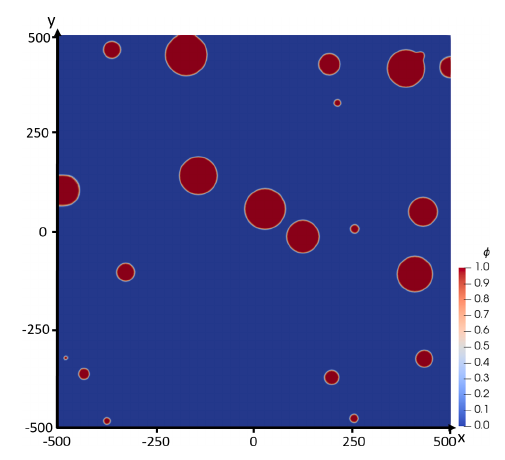 We present nucleation phase field model benchmark problems, expanding on our previous benchmark problems
on diffusion, precipitation, dendritic growth, linear elasticity, fluid flow and electrochemistry. Nucleation is the
process in which either a new thermodynamic phase or a new structure is created, such as solidification from the
melt, or self-assembly of particulates. Based on where the nucleation occurs, it can be divided into two main
categories: homogeneous nucleation and heterogeneous nucleation. In the first nucleation benchmark problem,
we focus on homogeneous nucleation for both single seed under different initial conditions and multiple seeds.
The second nucleation benchmark problem focuses on athermal heterogeneous nucleation and nucleation
behavior near the free growth limit with different undercooling driving forces.
We present nucleation phase field model benchmark problems, expanding on our previous benchmark problems
on diffusion, precipitation, dendritic growth, linear elasticity, fluid flow and electrochemistry. Nucleation is the
process in which either a new thermodynamic phase or a new structure is created, such as solidification from the
melt, or self-assembly of particulates. Based on where the nucleation occurs, it can be divided into two main
categories: homogeneous nucleation and heterogeneous nucleation. In the first nucleation benchmark problem,
we focus on homogeneous nucleation for both single seed under different initial conditions and multiple seeds.
The second nucleation benchmark problem focuses on athermal heterogeneous nucleation and nucleation
behavior near the free growth limit with different undercooling driving forces.


